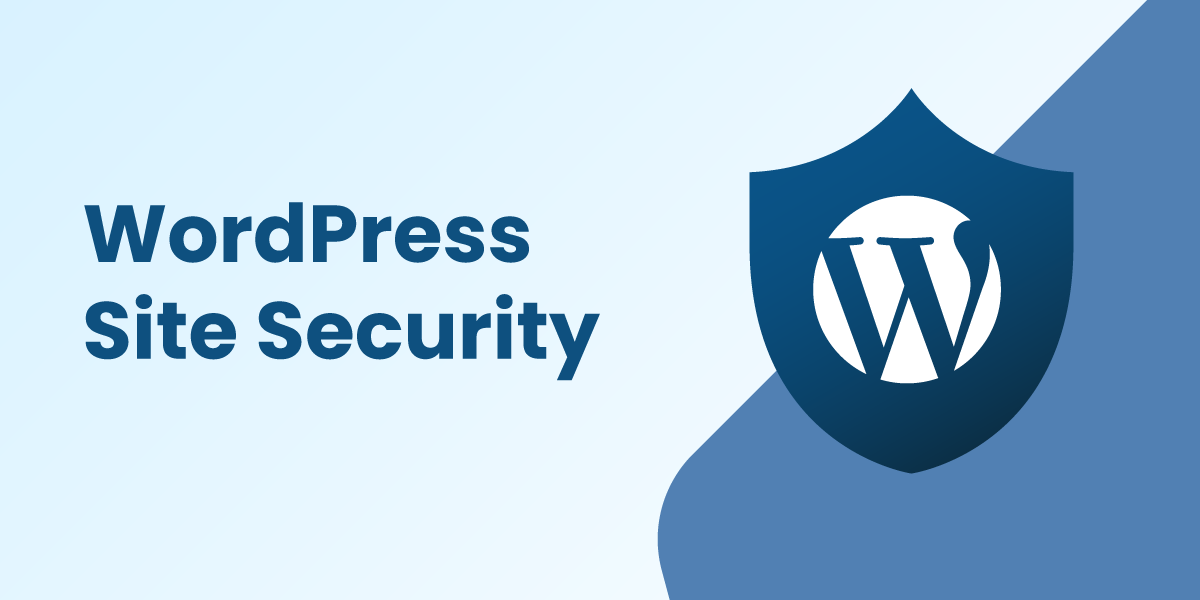Keep Your WordPress Site Secure: How to Scan for Malware
In today's digital world, website security is of utmost importance. If you have a WordPress site, you need to be particularly vigilant when it comes to protecting it from malware attacks. Malware can pose significant risks to your website's functionality, performance, and even your users' data. In this article, we will explore the importance of WordPress security and provide you with a comprehensive guide on how to scan your WordPress site for malware, including:
- The importance of having security for your Wordpress site
- The various types of malware
- The tools you will need for scanning Wordpress for malware
- How to scan your Wordpress site
- How to maintain security
Alt
What Is the Importance of WordPress Security?
In recent years, WordPress has become one of the most popular content management systems (CMS) globally. This popularity, however, has also attracted the attention of cybercriminals. Websites powered by WordPress are vulnerable to various forms of attacks, with malware being one of the most common threats. Understanding the risks associated with malware is essential for taking proactive security measures.
When it comes to website security, the stakes are high. Malware refers to malicious software designed to infect and compromise your website. It can take many forms, including viruses, worms, trojans, adware, and spyware. Once your WordPress site is infected, it can put your data and your visitors at risk.
The Risks of Malware on Your WordPress Site
Malware can wreak havoc on your website, causing a range of problems that can have serious consequences. Some of the potential risks include:
- Theft of sensitive user information, such as login credentials or credit card details. This can lead to identity theft and financial loss for your users.
- Manipulation or defacement of your website's content. Malware can modify your website's pages, injecting spammy links or inappropriate content that can damage your brand's reputation.
- Loss of website functionality, leading to a negative user experience. Malware can disrupt the normal operation of your website, making it slow, unresponsive, or even completely inaccessible to your visitors.
- Blacklisting by search engines, resulting in reduced visibility and traffic. If your website is infected with malware, search engines like Google may flag it as unsafe, leading to a drop in rankings and organic traffic.
Why Is Regular Scanning Essential?
Regular scanning of your WordPress site is crucial because it allows you to identify and remove malware before it can cause significant damage. By implementing a proactive scanning approach, you can:
- Ensure the integrity of your website's files and database. Regular scans can detect any unauthorized changes or suspicious files, allowing you to take immediate action.
- Protect your visitors' sensitive information. By scanning for malware, you can prevent data breaches and safeguard your users' personal and financial data.
- Maintain a positive reputation and user experience. A malware-free website instills trust in your visitors and ensures a smooth browsing experience, increasing the likelihood of repeat visits and conversions.
- Stay informed about potential vulnerabilities in your site's security. Regular scanning can help you stay one step ahead of cybercriminals by identifying weaknesses in your WordPress setup and plugins.
Identifying Different Types of Malware
Malware comes in various forms, each with its unique characteristics and potential impact on your WordPress site. Understanding these types of malware can help you better defend your site against future attacks.
When it comes to protecting your WordPress site, knowledge is power. By familiarizing yourself with the different types of malware that can target your website, you can take proactive steps to safeguard your online presence.
Common Malware Threats to WordPress Sites
WordPress sites often face the following types of malware:
- Backdoors: These are hidden access points that allow hackers to enter your website undetected. Backdoors can be created through vulnerabilities in plugins, themes, or weak passwords. Once hackers gain access, they can manipulate your site, steal sensitive information, or use your site to launch further attacks.
Backdoors are like secret passageways that provide unauthorized access to your website. They can be extremely difficult to detect, as they are designed to blend in with the rest of your site's code. Hackers often use backdoors to maintain control over compromised websites long after initial access has been gained. - Phishing: Malware that tricks users into disclosing sensitive information, such as passwords or credit card details, through spoofed login forms or emails. Phishing attacks are often disguised as legitimate communications from trusted sources, making it challenging for users to identify the threat.
Phishing attacks prey on human vulnerability, exploiting our trust in familiar brands or institutions. Hackers create convincing replicas of login pages or emails, tricking unsuspecting users into revealing their personal information. These stolen credentials can then be used for identity theft or financial fraud. - Malicious redirects: Code injected into your site that redirects visitors to malicious websites. Malicious redirects can be triggered by compromised plugins, themes, or even unauthorized modifications to your site's code.
Malicious redirects are like invisible signposts that divert your website visitors to dangerous destinations. Once a visitor lands on a malicious website, they may be exposed to further malware infections, scams, or other harmful activities. These redirects can tarnish your site's reputation and drive away potential customers. - Drive-by downloads: Automatic downloads of malware onto visitors' devices without their consent. Drive-by downloads exploit vulnerabilities in browsers or plugins to silently install malicious software on unsuspecting users' devices.
Drive-by downloads are like stealthy intruders that infiltrate your visitors' devices without their knowledge or permission. By exploiting security weaknesses in popular software, such as web browsers or plugins, hackers can deliver malware directly to your visitors' computers or mobile devices. This can lead to data breaches, system crashes, or unauthorized access to sensitive information. - Malvertising: Displaying malicious advertisements that can infect visitors' devices. Malvertising involves hackers injecting malicious code into legitimate online advertisements, which are then displayed on various websites.
Malvertising is like a wolf in sheep's clothing, hiding dangerous threats behind innocent-looking advertisements. When users click on these infected ads, they may unknowingly download malware onto their devices. This can result in compromised security, privacy breaches, or financial losses.
How Malware Affects Your Website's Performance
Malware can significantly impact your website's performance, leading to a poor user experience and lost opportunities. Some notable performance issues caused by malware include:
- Slower page load times, which can result in higher bounce rates. When your website is infected with malware, it can cause delays in loading content, leading to frustrated visitors who may choose to leave your site before it even fully loads.
- Increased resource usage, leading to higher hosting costs. Malware infections can consume additional server resources, putting a strain on your hosting environment. This can lead to higher costs as you may need to upgrade your hosting plan or invest in additional resources to accommodate the increased demand.
- Compatibility issues with browsers or plugins. Malware can interfere with the proper functioning of your website, causing compatibility issues with browsers or plugins. This can result in broken features, distorted layouts, or even complete website crashes.
- Decreased search engine rankings. Search engines prioritize secure and trustworthy websites. If your site is infected with malware, search engines may flag it as unsafe, leading to a drop in search engine rankings. This can negatively impact your online visibility and organic traffic.
Protecting your WordPress site from malware is crucial for maintaining its performance, reputation, and security. By implementing robust security measures, regularly updating your themes and plugins, and staying vigilant against potential threats, you can minimize the risk of malware infections and ensure a safe browsing experience for your visitors.
Essential Tools for Scanning WordPress for Malware
Fortunately, a wide range of tools are available to help you scan your WordPress site for malware. These tools enable you to proactively detect and remove any malicious code or files that may have infiltrated your website.
Free vs. Paid Malware Scanning Tools
When it comes to choosing a malware scanning tool, you'll find both free and paid options. Free tools can provide a basic level of protection, while paid tools offer more advanced features and ongoing support. Consider your specific needs and budget when deciding which option is best for you.
Features to Look for in a Malware Scanning Tool
When evaluating malware scanning tools, consider the following features:
- Real-time scanning: Continuous monitoring and immediate alerts for any malware threats.
- Scheduled scanning: The ability to set regular scanning intervals to automate the process.
- Easy-to-use interface: User-friendly tools that don't require extensive technical knowledge.
- Compatibility: Ensure the tool is compatible with your WordPress version and any additional plugins or themes you may be using.
- Malware removal: Look for tools that not only detect but can also remove malware from your website.
Step-By-Step Guide to Scanning Your WordPress Site for Malware
Now that you understand the importance of scanning and have identified the types of malware threats, let's walk through the process of scanning your WordPress site for malware.
Preparing Your Site for Scanning
Before initiating the scan, take the following steps to ensure an effective and accurate scanning process:
- Update WordPress: Ensure your WordPress installation, plugins, and themes are up to date.
- Back up your site: Take a full backup of your website's files and database.
- Generate security keys: Replace your WordPress security keys to invalidate any existing cookies or sessions.
- Tighten permissions: Review and adjust file and directory permissions to minimize the risk of unauthorized access.
- Disable unneeded plugins and themes: Deactivate and uninstall any outdated or unused plugins and themes.
Interpreting the Results of Your Malware Scan
Once the scan is complete, it's essential to interpret the results accurately. Most scanning tools will classify detected items into various categories, such as known malware, suspicious files, or outdated software. Take the time to understand the severity of each finding and take appropriate action accordingly.
Maintaining Your WordPress Site's Security
Scanning your WordPress site for malware is just one component of an effective security strategy. To maximize the protection of your website, consider implementing the following best practices:
Regular Updates and Their Role in Security
Staying up to date with the latest versions of WordPress, plugins, and themes is crucial for maintaining a secure website. These updates often include security patches that address vulnerabilities and protect your site against known malware threats. Make it a habit to regularly check for updates and apply them promptly.
Best Practices for Ongoing WordPress Security
In addition to regular updates, here are some best practices to enhance your WordPress site's security:
- Use strong, unique passwords for your WordPress admin accounts.
- Enable multi-factor authentication (MFA) to add an extra layer of security.
- Limit login attempts to prevent brute-force attacks.
- Secure your wp-config.php file by moving it to a higher directory level.
- Regularly monitor your website's access logs for suspicious activity.
Conclusion
Ensuring the security of your WordPress site is not a one-time task. It requires an ongoing effort to protect against evolving threats. By understanding the risks of malware, utilizing the right scanning tools, and following best security practices, you can proactively protect your WordPress site from malicious attacks. Regular scanning for malware is a crucial element of this strategy, allowing you to identify and remediate any potential vulnerabilities before they cause significant harm. Stay vigilant, stay informed, and keep your WordPress site secure.

 Drive More Visibility, Traffic, and Sales
Drive More Visibility, Traffic, and Sales
